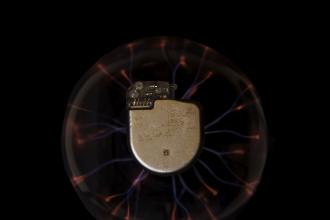New study: Valve-in-valve implants
Replacing failing artificial animal-based heart valves by implanting tissue valves inside them is an effective option for high-risk patients, according to new research reported in Circulation: Journal of the American Heart Association.
In the study, physicians from Canada and the United Kingdom describe how 24 high-risk patients whose previous implants failed received transcatheter valve-in-valve implantation, where a new artificial valve is seated within a previously implanted valve made of pig or cow tissue.
The new valve is inserted on a catheter through a small incision between the ribs or through a puncture in a blood vessel in the leg. Placed inside the old surgically implanted valve and expanded by inflating a balloon, the new valve pushes the old one out of the way.
Once expanded and opened, the new valve opens and functions similarly to the patient’s own valve.
Many, but not all, surgical valves can be replaced this way. The procedure is offered only to selected patients with failed surgical valves who would be poor candidates for another operation. Factors that made the patients in the study risky or ineligible as surgical candidates included two or more prior open-chest surgeries, severe pulmonary hypertension, and various heart or other complications.
Ten patients in the study had failed aortic valves; seven, failed mitral valves; six, failed pulmonary valves; and one, a failed tricuspid valve.
All patients survived the transcatheter procedure. However, one mitral valve patient whose implantation was converted to traditional open chest surgery suffered a stroke and renal failure and died the next day. Another mitral valve patient died 45 days after the surgery.
Dr John G. Webb is lead author of the study and medical director of Interventional Cardiology and Interventional Research at St. Paul’s Hospital. Full details of the study can be viewed at http://circ.ahajournals.org.

